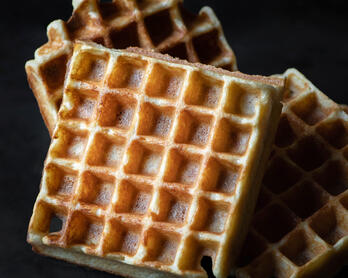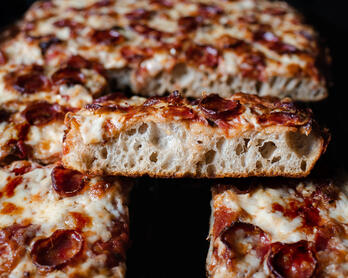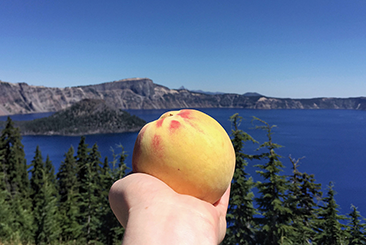Tomato Water Sourdough Pita
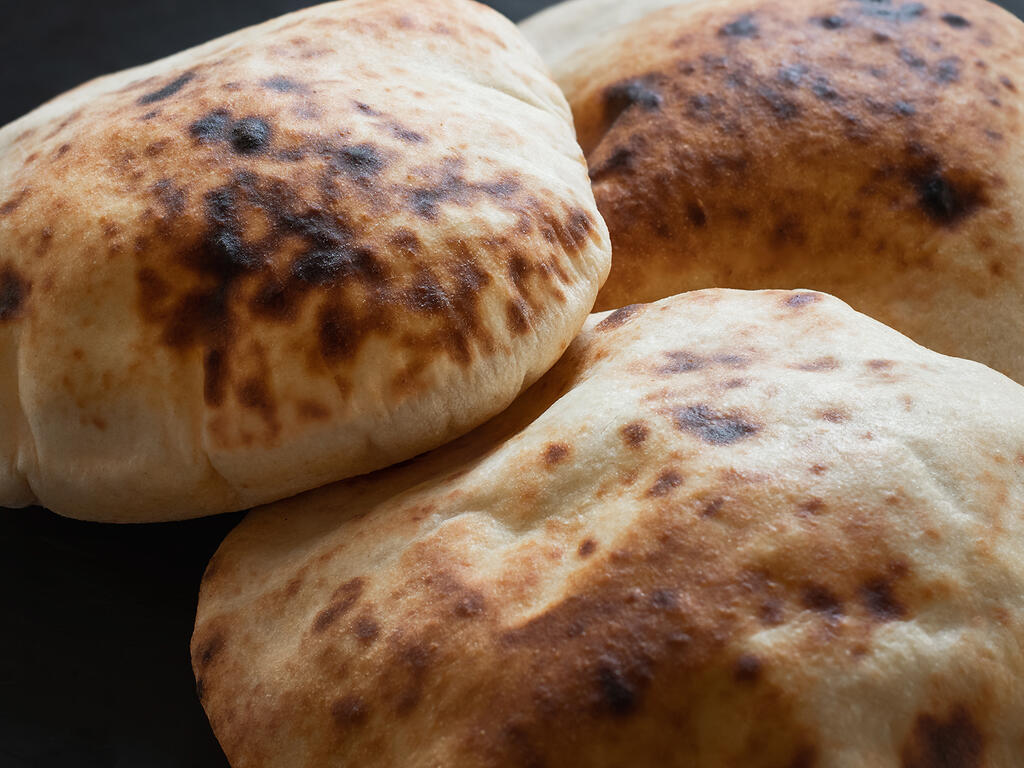
Tomato Water Sourdough Pita is a sister recipe to the Sourdough Naan that has become a favorite for me and a number of readers. Adapted from Sarah Owens' Sourdough, I make the flatbread monthly and almost always have some in the freezer.
The inspiration to add tomato water came from Chef Jeremy Fox (Instagram is still good for something) and the results did not disappoint. The whole grains, touch of acidity from the sourdough starter, and hint of summertime make for a satisfying combination. You can dip the bread, serve it as a side, or use it for a sandwich. That said, there are times when I just want to sit quietly with pita and butter so I can take in all the nuance. Good bread has a way of insisting you give it your undivided attention.
The Pomodoro Sauce circle of no waste is now (unintentionally) complete. The skins are living a second life in Tomato Salt, Tomato Water made its way into this pita, and the rest is carrying on in sauce so good the smell makes your jaw tingle.
Around The Dinner Table
The Last Meal
On the note of undivided attention, what is it that makes bread so satisfying and comforting? The smell alone elicits similar reactions across continents and generations. I've heard family members say quite seriously that they want their last meal to be a warm slice of bread with butter. Frankly not much could be better.
I was pondering the above question while admiring a fresh bake one day - huffing the flatbread if we're being honest. I wondered why this relatively simple food was bringing me so much pleasure in that moment. Bread isn't fancy, the ingredients are humble, and just about anybody can make it so rarity wasn't the draw.
Ratatouille
Smell has an especially intimate relationship with the brain because odors tap directly into the regions that relate to emotion and memory known as the limbic system.
When we hear a sound, the signal is conveyed from our ears to the brainstem, then up to a part of the brain called the thalamus, before finally reaching the auditory cortex. But when it comes to sensing smells, the connection to the brain is less circuitous. - Nature
Basically, hearing gets put through a relay system whereas smell skips those pitstops and cruises straight to the emotion and memory center of our brain. This architecture explains the near universal experience of a smell instantly evoking emotions ranging from excited and happy to nostalgic. Sometimes the corresponding memories are so vivid they can seem more real than looking at a photograph.
But why, if we're such visual creatures, does smell get this elevated status in our brains? Some think it goes back to the way we evolved: smell is one of the most rudimentary senses with roots in the way single-celled organisms interact with the chemicals around them, so it has the longest evolutionary history. This also might explain why we have at least 1,000 different types of smell receptors but only four types of light sensors and about four types of receptors for touch. - Discover
A great illustration (literally and figuratively) of the unique relationship between smell and memory is the moment Anton Ego tries the ratatouille. One bite and his mind flashes back to his childhood kitchen where his mom is standing at the stove, a warm end-of-day glow filling the scene. Little Anton is standing in the doorway with scraped-up knees and looking glum. He sits down to a plate of ratatouille and with just one bite his face brightens. The dish was happiness and respite from a grey mood. The relatability of the scene and look in elder Anton's eyes has been known to make grown folk emotional. Food is not so much the source of the happiness as it is the key to unlocking something within. Specific smells become the proxy for emotional experiences which is pretty incredible.
Anton's experience is what many refer to as the Proust effect. This refers to a scene from Marcel Proust's work, In Search of Lost Time (À la recherche du temps perdu), a seven-volume novel that I have no ambition to read. The oft quoted passage centers around an experience where the smell and taste of warm tea and a madeleine unlock vivid childhood memories. Interestingly, and bringing this back to bread (always), this famous moment in literature was originally anchored by toast rather than a dainty cookie. Perhaps the editor felt that was too pedestrian? I suppose "Proust's stale bread" doesn't have quite the same ring as "Proust's madeleine".
Was I having a Proustian episode whilst huffing my Tomato Water Pita? I was not - there were no memories or past experiences whisking me away. The pleasure was in the moment itself and the enjoyment could only be described as feeling hardwired into my senses.
Brain Fuel
Glucose is an absolutely essential requirement for our brain so it would follow that there could be something in our DNA seeking it out. Humans have been eating bread for 14,000 years and our ancestors were eating starches as far back as 100,000 years. A study completed in 2021 suggests that starches may have played a role in making us the intelligent homo sapiens that we are (or aren't).
The findings suggest such foods [starches] became important in the human diet well before the introduction of farming and even before the evolution of modern humans. And while these early humans probably didn’t realize it, the benefits of bringing the foods into their diet likely helped pave the way for the expansion of the human brain because of the glucose in starch, which is the brain’s main fuel source.
The delight I get from smelling and tasting my flatbread does in fact feel innate. Perhaps - just perhaps - that feeling is simply my Neanderthal self living her best life when she swipes some butter on long fermented grains.
But First, Bread
Evidence of our deep connection to bread is everywhere. At Parachute in Chicago, their Bing Bread reached cult status and was "too emotionally important to customers" to ever remove from the menu. It was only recently after a menu reboot that they stopped offering it. I'll talk more about that recipe in the upcoming newsletter (see bottom of page). Many restaurants become known for what is often the least expensive thing on the menu.
At Per Se, Thomas Keller’s fine-dining temple in Manhattan, it arrives after the amuse-bouche, after the oysters with caviar, but before the sashimi. It is the Parker House roll, a dairy-laden soft bread roll roughly the size of a clenched fist, and they couldn’t take it off the menu if they tried. - Taste
States and governments throughout human history have had to reckon with that fact that not providing the people with their carbs is a trigger, especially when said carbs are bread. In Roman times, riots came and went with bread and grain supplies. At one point, the emperor was supplying hundreds of thousands of free loaves a month to keep the peace. The French Revolution was in part stoked by a lack of bread. Riots over the cost of bread jump from Boston circa 1713 to Iran in 2022. My intent is not to oversimplify what drove people to the streets, but bread is an essential foodstuff and accessibility and cost can fan the flame of discontent.
I'm not sure any of this arrives at a satisfactory answer for my original question. Sure bread is wonderful and necessary, but its hold over us is something specific. The more I read on the subject the more complicated the reason seems. There's just something about our long relationship with the alchemy of flour, water, and salt. Regardless of whether it's for survival or pleasure, we want bread.
Before You Go
I came across a bonus useless fact c/o The Short Wave. Apparently our nostrils alternate rather than working in tandem. Nasal cycling is where one nostril is doing most of the work at any given time.
Retronasal olfaction or the smell we sense while chewing food is the dominant part of what we perceive as taste. That in and of itself is fascinating. When it comes to the nasal cycling, if you have a cold with one stuffy nostril you'll find that your sense of taste comes and goes. That's because your sense of smell (and by relation, taste) is switching from the unstuffed side to the stuffed side. I had no idea our nostrils got work breaks and was kind of amazed by that.
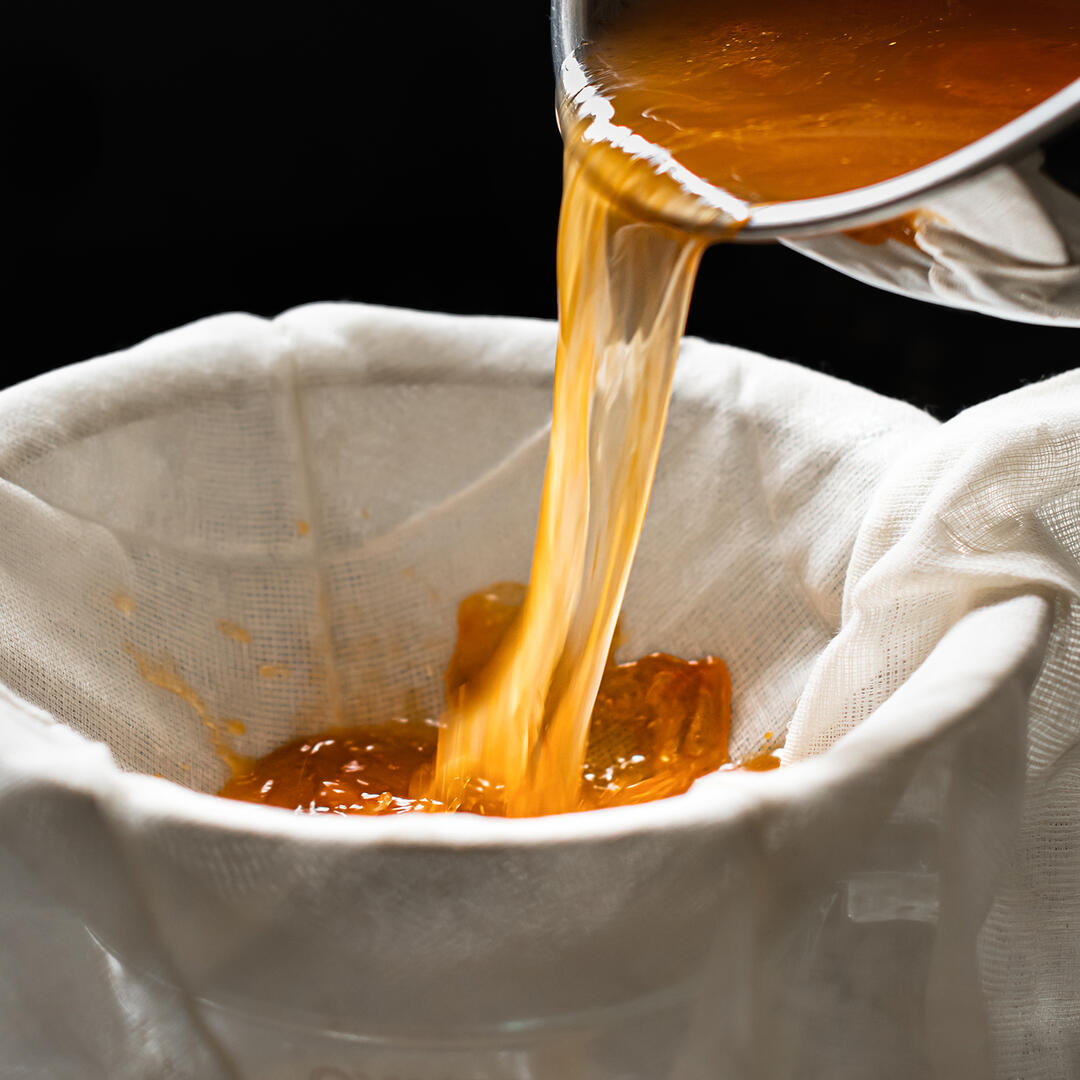
Recipe Tips
Salty
The salt amount in this recipe assumes you made the Tomato Water to spec and it yielded roughly the same amount of liquid. Caveats:
- If there isn't any salt in your tomato water, add 1 gram fine sea salt back into this recipe for a total of 3.5 grams (or round to 4 grams).
- If your tomato water didn't yield as much liquid as the recipe suggests, then that means there is a higher concentration of salt in the water. You may want to dial the salt back a little further than the recipe below suggests - perhaps to 1.5 grams (or round to 2 grams). If you're like me and enjoy tinkering with the math, I'm including some formulas below.
Copying this section from the tomato water recipe for those that want to geek out on ratios.
- Diamond kosher salt is 8.5 grams per tablespoon.
- 4lbs of tomatoes yields about 24 ounces/711 grams of tomato water when using a mix of Roma and Early Girls.
Let's say all of the salt ends up in the tomato water. It probably doesn't but for the sake of easy numbers we'll go with that. To calculate approximately how much salt is in the liquid:
- grams of salt / (liquid yield/100) = amount of salt per 100 grams tomato water
- for the example above 8.5 / (711/100) = 1.2 grams salt per 100 grams of tomato water
The recipe below includes 90 grams of filtered water. Swapping in tomato water will add about 1.08 grams of salt bringing the total salt in the flatbread to 1.8%. Generally speaking, sourdough bread recipes suggest anywhere from 1% to 2% salt so technically 1.8% is still in range. With that said, I reduce the fine sea salt in the dough a touch when using my salty tomato water since the original pita recipe only has 1.3% salt.
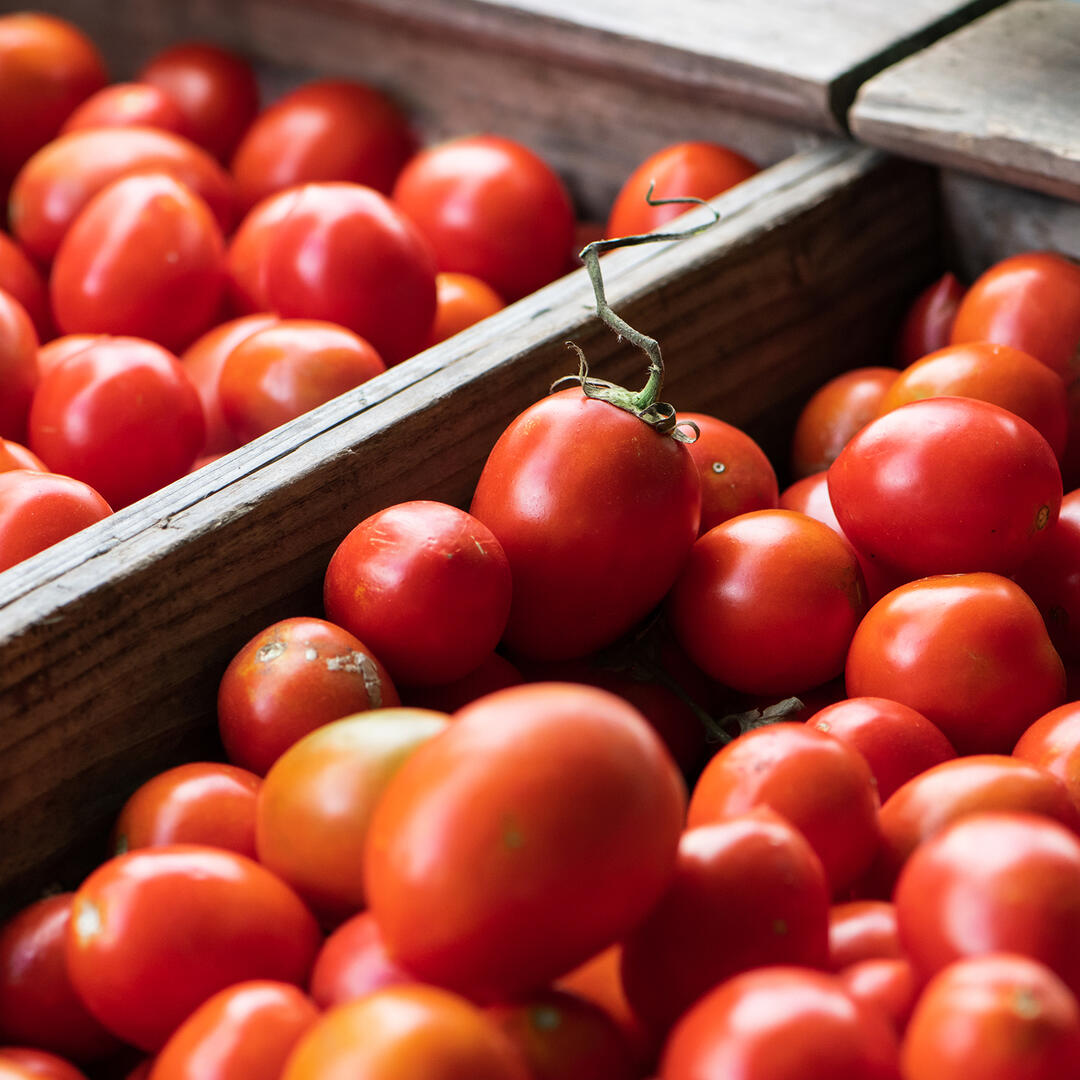
Farmers | Artisans
I make an effort to source my food from California artisans with a special focus on the Santa Monica Farmers Market. Below is a list of the folks who contributed to this dish.
- Grist & Toll // Whole Grain Spelt, Whole Grain Sonora
- Trattore Farms // Olive Oil
- Central Milling // Organic Beehive (All-purpose) Flour
Tools
- Roccbox - I have owned this pizza oven for many years and use it almost every week. As can be seen in my naturally-leavened pizza posts here and here, the results are top notch. The oven is portable, easy to use, and requires virtually no maintenance. It's an investment but I highly recommend it.
- Mini Rolling Pin - I bought this rolling pin for the Airstream and liked it so much I bought a second one for the house. It's the perfect size for rolling out the pita dough.
- Silicone Pastry Brush - I own both the small and large. One tip is to only hand wash this brush. I find that silicone absorbs off flavors/smells when run through the dishwasher.
- OXO Scale - This scale is a workhorse that I purchased over 10 years ago and only recently had to replace. RIP scale #1. It's a sturdy cooking companion that repeatedly gets covered in flour, sauce, or whatever else is flying around the kitchen. I recommend keeping liquids away from the screen since they can find their way inside. That being said, the scale seems to dry out and keep on measuring. Note: My original scale with the black pull-out display is now made in all stainless steel. Watch out for the online sellers who are price-gouging and charging a bundle for the older model. As far as I can tell, the new stainless version is the same.
My Favorite Cooking Tools spotlights the kitchen equipment I have owned and used for years.
Ingredients (Adapted from Sourdough - makes four)
- 134 grams ripe 100% hydration Sourdough Starter
- 90 grams Tomato Water
- 20 grams extra-virgin olive oil
- 40 grams plain whole-milk yogurt
- 6 grams refined sugar
- 220 grams unbleached organic all-purpose flour
- 55 grams whole grain Spelt, Sonora, or whole grain wheat of choice
- 2.5 grams (or round to 3) fine sea salt Note: See Recipe Tips.
- 2 tablespoons salted butter
Instructions for 24-hour Fermentation
I recommend reading through the Sourdough Naan intro and tips before jumping into this one. Included are hypothetical times that can be tweaked to fit your schedule.
Day 1
12 p.m.
- Feed the sourdough starter with a 50% inoculation. Note: My starter doubles in about 6 hours with a 50% feeding. As can be seen in the following timeline, I'm not mixing the dough when the starter is "peak" and that's perfectly fine. The beauty of this recipe is the flexibility. If feeding the starter later in the afternoon, I just increase the inoculation to 75%.
9:00 p.m.
- In a medium bowl, combine the sourdough starter and tomato water then stir to dissolve. Once the starter is dissolved, add the olive oil, yogurt, sugar, then stir to combine. Do not add the salt.
- Add the flour and mix and squeeze the dough until combined and there aren't any dry bits.
- Once the dry flour is incorporated, knead the dough in the bowl or on the workbench if you prefer. Fold and press until smooth. Note: This process should be a breeze since the dough is pliable and easy to work with.
- Lightly coat a clean medium bowl with olive oil, pat the top of the ball with your oiled hand (or whatever you used to coat the bowl), then place the dough ball in the bowl and cover tightly with plastic. Set aside for 40 minutes.
9:50 p.m.
- Remove the dough ball from the bowl and place on a damp or lightly oiled workbench. Flatten the dough into a disc, then jiggle and stretch the dough until it's about 10-inches wide. The dough will be easy to work with and shouldn't tear. Sprinkle a portion of the salt evenly over the entire surface, fold 1/4 of the round in towards the center and sprinkle some more salt on that piece, then repeat with the other three quadrants as if you're folding a package. Flip the dough and sprinkle any remaining salt on the bottom. Gently press the dough into a round shape and then knead roughly 20 times until you have a smooth ball again. You will no longer feel the salt.
- Very lightly oil your hands, pat the dough, then place back into the oiled bowl. Cover tightly with plastic and refrigerate overnight.
Day 2
12:30 pm
- Remove the dough from the refrigerator and set aside to rest for 40 minutes.
- After 40 minutes, cut the dough into 4 even pieces (about 5 ounces each). Flatten each ball into a 5 to 6-inch disc. Holding the dough in the palm of one hand, fold in the edges until you have a round ball. I complete about 6 folds. Place the ball on the workbench seam-side down, cup your hand over the top, then move your hand in a small circle to tighten and round the dough. If a small seam remains on the bottom, gently pinch it closed. Place the ball seam-side down in a lightly oiled container that can be covered. Repeat with the remaining dough. Cover the container tightly and refrigerate. Note: You don't have to refrigerate the dough. If you prefer to proceed to the bake, leave the dough out at room temperature and adjust the following times accordingly.
3:00 p.m.
- About 2 1/2 hours before you intend to bake, pull the shaped dough out of the fridge and let it rest (covered) at room temperature.
4:45 p.m.
- About 45 minutes before you're ready to bake, pre-heat the conventional oven to 500°F degrees and place a pizza stone or baking steel on the middle rack. The Roccbox should be pre-heated to about 750 to 800°F.
5:30 p.m. (or thereabouts)
- Lightly dust your workbench, then dust the dough ball. Brush any excess flour off of the dough.
- Pat the dough ball flat. A few good pats and the disc will be about 4-4 1/2-inches across. Roll evenly from the center to the edge (first pass), turn the disc a quarter turn and roll from the center to the edge (second pass), then repeat a third and fourth time. Just four passes from center to edge should create a 6-inch round. Note: Sometimes I add in one extra pass to even out a wonky edge.
- Transfer the rolled dough to a pizza peel and then to the Roccbox or baking steel. Note: I don't flour the peel. The dough should not stick.
- In a conventional oven, cook for 3-5 minutes on each side until charred and puffed. In the Roccbox, rotate the the naan 180 as soon as it's puffed and set. There is no need to flip.
- While the flatbread is baking, melt a couple tablespoons of salted butter. Lightly brush the hot naan with melted butter and cool on a wire rack.
Instructions for Day-of Mixing & Baking
Included are hypothetical times that can be tweaked to fit your schedule.
Day 1
11:00 p.m. (or whenever you feed your starter at night)
- Feed the sourdough starter with a 25% inoculation. Note: I don't always mix the naan when the starter is "peak" and that's perfectly fine. The beauty of this recipe is the flexibility.
Day 2
10:00 a.m.
- In a medium bowl, combine the sourdough starter and tomato water then stir to dissolve. Once the starter is dissolved, add the olive oil, yogurt, sugar, then stir to combine. Do not add the salt.
- Add the flour and mix and squeeze the dough until combined and there aren't any dry bits.
- Once the dry flour is incorporated, knead the dough in the bowl or on the workbench if you prefer. Fold and press until smooth (about 3 minutes). Note: Kneading by hand is a breeze since the dough is pliable and easy to work with.
- Lightly coat a clean medium bowl with extra-virgin olive oil, then place the dough ball in the bowl and cover tightly with plastic. Set aside for 40 minutes.
10:45 a.m.
- Remove the dough ball from the bowl and place on a lightly oiled workbench. Flatten the dough into a disc, then jiggle and stretch the dough until it's about 10-inches wide. The dough will be easy to work with and shouldn't tear. Sprinkle a portion of the salt evenly over the top, fold 1/4 of the round in towards the center and sprinkle some more salt on that piece, then repeat with the other three quadrants as if you're folding a package. Flip the dough and sprinkle any remaining salt on the bottom. Gently press the dough into a round shape and then knead for about 15-20 seconds (roughly 6 times) until you have a smooth ball again. You will no longer feel the salt.
- Very lightly oil your hands, rub the dough, then place back into the oiled bowl.
- Cover tightly with plastic and set aside for 40 minutes.
11:45 a.m.
- Remove the dough from the bowl and cut into 4 even pieces (about 5 ounces each). Flatten each ball into a 5 to 6-inch disc. Holding one piece in the palm of one hand, fold in the edges until you have a round ball and have created a bit of tension. I complete about 6 folds. Place the ball on the workbench seam-side down. Cup your hand over the top, then move your hand in a small circle to tighten and round the dough. If a small seam remains on the bottom, gently pinch it closed. Lightly oil your hands, rub the dough, and then place the ball seam-side down in an oiled container that can be covered. Repeat with the remaining dough. Cover the container tightly and set aside for 2 hours. Note: Use just enough so things don't stick.
1:45 p.m.
- If you're not ready to bake, refrigerate the dough at this point. Remove the dough from the refrigerator an hour before you want to pop it in the oven.
- If you're ready to bake, pre-heat the conventional oven to 500°F degrees and place a pizza stone or baking steel on the middle rack. The Roccbox should be pre-heated to about 750 to 800F.
2:15 p.m.
- Lightly dust your workbench, then dust the dough ball. Brush any excess flour off of the dough.
- Pat the dough ball flat. A few good pats and the disc will be about 4-4 1/2-inches across. Roll evenly from the center to the edge (first pass), turn the disc a quarter turn and roll from the center to the edge (second pass), then repeat a third and fourth time. Just four passes from center to edge should create a 6-inch round. Note: Sometimes I add in one extra pass to even out a wonky edge.
- Transfer the rolled dough to a pizza peel and then to the Roccbox or baking steel. Note: I have never needed to flour the peel. The dough should not stick.
- In a conventional oven, cook for 3-5 minutes on each side until charred and puffed. In the Roccbox, rotate the the naan 180 as soon as it has puffed and set. There is no need to flip in the Roccbox.
- While the flatbread is baking, melt a couple tablespoons of salted butter. Lightly brush the hot naan with melted butter and cool on a wire rack.
Storage
- Store in a sealed container at room temperature for 1 to 2 days though it's best the day it's baked. A brief warming in the oven or 5-8 second spin in the microwave will wake the gluten up.
- Freeze the cooled pita. To serve, defrost at room temperature then warm briefly. It will be practically indistinguishable from the freshly baked version.
Newsletter
Subscribe at the bottom of this page for the Chic Eats roundup. It includes new and updated recipes along with a grab bag of unique content that was interesting enough to share around the dinner table.



